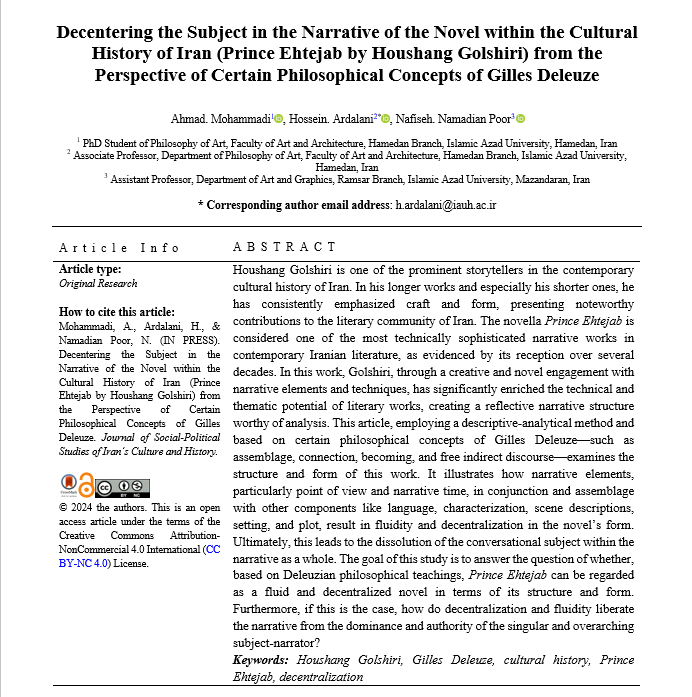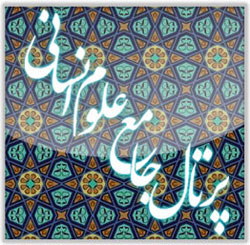Decentering the Subject in the Narrative of the Novel within the Cultural History of Iran (Prince Ehtejab by Houshang Golshiri) from the Perspective of Certain Philosophical Concepts of Gilles Deleuze
Keywords:
Houshang Golshiri, Gilles Deleuze, Shazdeh Ehtjab, Centrifuge, Sialit.Abstract
Houshang Golshiri is one of the prominent storytellers in the contemporary cultural history of Iran. In his longer works and especially his shorter ones, he has consistently emphasized craft and form, presenting noteworthy contributions to the literary community of Iran. The novella Prince Ehtejab is considered one of the most technically sophisticated narrative works in contemporary Iranian literature, as evidenced by its reception over several decades. In this work, Golshiri, through a creative and novel engagement with narrative elements and techniques, has significantly enriched the technical and thematic potential of literary works, creating a reflective narrative structure worthy of analysis. This article, employing a descriptive-analytical method and based on certain philosophical concepts of Gilles Deleuze—such as assemblage, connection, becoming, and free indirect discourse—examines the structure and form of this work. It illustrates how narrative elements, particularly point of view and narrative time, in conjunction and assemblage with other components like language, characterization, scene descriptions, setting, and plot, result in fluidity and decentralization in the novel’s form. Ultimately, this leads to the dissolution of the conversational subject within the narrative as a whole. The goal of this study is to answer the question of whether, based on Deleuzian philosophical teachings, Prince Ehtejab can be regarded as a fluid and decentralized novel in terms of its structure and form. Furthermore, if this is the case, how do decentralization and fluidity liberate the narrative from the dominance and authority of the singular and overarching subject-narrator?
Downloads








